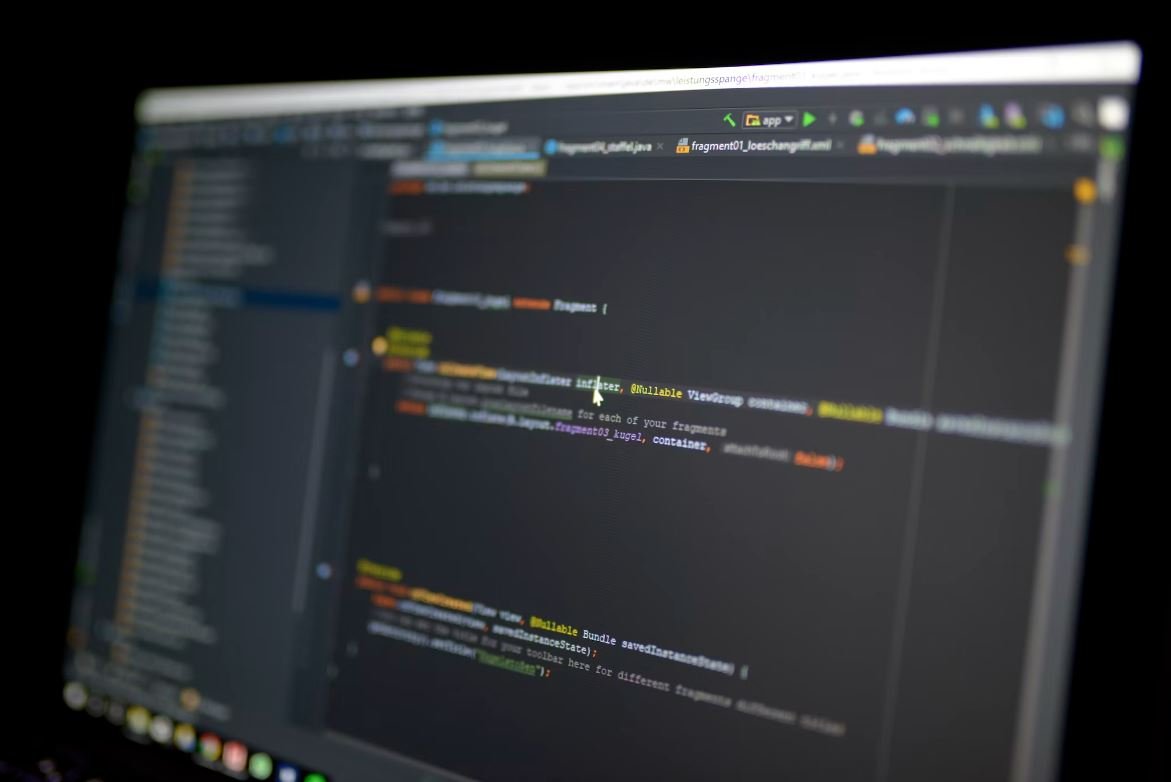Deepfake and Privacy
Deepfakes, a combination of “deep learning” and “fake,” refer to the use of artificial intelligence to create realistic manipulated videos or images that appear authentic but are not. With the rise of deepfake technology, concerns surrounding privacy and security have intensified.
Key Takeaways:
- Deepfakes use artificial intelligence to create deceptive content.
- Privacy is at risk as deepfakes can be used to create damaging or false information about individuals.
- Authentication tools and awareness are crucial in combating the spread of deepfakes.
- Regulations and policies are being developed to address the threats posed by deepfakes.
- Education and media literacy play a significant role in helping individuals identify and navigate deepfakes.
**Deepfakes** have become a growing concern across various sectors, including politics, entertainment, and personal relationships. *The technology allows for incredibly realistic replication of someone’s appearance and voice, making it difficult to distinguish between real and fake content.* Deepfake videos can be created by synthesizing and superimposing images or videos of a target individual onto manipulated source material. This technology has raised significant privacy concerns due to its potential misuse and the ease with which deepfakes can be disseminated through various online platforms.
**The implications of deepfake technology** extend beyond just privacy concerns. Deepfakes have the potential to cause reputational damage, spread misinformation, facilitate fraud, and even incite conflict. *The ability to manipulate audio and visual content to create realistic but fabricated information poses a threat to societal trust and public awareness.* As deepfakes advance in sophistication, they become harder to detect, making it crucial to develop effective tools and countermeasures to combat this growing problem.
The Fight Against Deepfakes
| Defense Method | Description |
|---|---|
| Forensic Analysis | Using various techniques to analyze deepfake content and identify inconsistencies or manipulations. |
| Blockchain Verification | Using blockchain technology to verify the authenticity and integrity of visual content. |
| Media Authentication | Developing algorithms and systems to authenticate and verify media content. |
Several countermeasures have been proposed and implemented to combat the threat of deepfakes. **Forensic analysis** techniques aim to detect inconsistencies in deepfake content through the analysis of artifacts or subtle cues that are not recognizable to the human eye. *These techniques leverage AI and machine learning algorithms to identify digital manipulations.* Blockchain technology is also being explored for **verification** purposes, as it provides a decentralized and transparent method for verifying the authenticity and integrity of visual content. Additionally, **media authentication** tools and algorithms are being developed to authenticate and verify media content to ensure its trustworthiness.
**Regulatory efforts** are also being made to address the challenges posed by deepfakes. Governments and technology companies are actively working to establish policies and regulations to mitigate the risks associated with deepfake technology. Some proposals include setting guidelines for the use of deepfakes in certain contexts and holding platforms accountable for deepfake content uploaded by their users. While regulation is necessary, finding the right balance between preserving privacy and freedom of expression remains a challenge.
Deepfake Awareness and Education
| Incident | Description |
|---|---|
| Political Manipulation | Deepfake videos created to manipulate public opinion and influence elections. |
| Celebrity Misrepresentation | Deepfake content featuring celebrities in explicit or compromising situations. |
| Financial Fraud | Deepfake audio used in voice phishing attacks to impersonate individuals for financial gain. |
A comprehensive approach to tackling deepfakes includes a strong emphasis on **awareness and education**. People need to be informed about the existence and potential dangers of deepfakes to avoid falling victim to their deceptive nature. *By understanding the technology behind deepfakes and the potential risks they pose, individuals can better protect their privacy and make informed decisions when consuming media content.* Media literacy programs, educational campaigns, and the integration of deepfake detection and analysis into digital media curricula can play a crucial role in empowering individuals to identify and combat deepfakes effectively.
Ultimately, the fight against deepfakes requires a collaborative effort involving industry stakeholders, technology developers, governments, and individuals alike. By staying vigilant, advocating for stronger regulations, investing in technology solutions, and promoting media literacy, society can strive towards minimizing the harmful effects of deepfakes and preserving trust in digital media.
Conclusion
The rise of deepfakes has brought privacy concerns to the forefront, threatening individuals, organizations, and society at large. **Deepfake technology**, with its potential for manipulation and abuse, necessitates the implementation of effective countermeasures and regulations. *Through education, awareness, and collaboration, we can work towards safeguarding our privacy and combating the harmful effects of deepfakes.* Stay informed, stay vigilant, and contribute to the ongoing efforts in mitigating the risks associated with this rapidly evolving technology.

Common Misconceptions
Misconception 1: Deepfakes only affect famous individuals
Many people believe that deepfakes only pose a threat to celebrities or public figures. However, this is a misconception as deepfake technology can be used to create manipulated videos of anyone, regardless of their level of fame.
- Deepfakes can be used to target regular individuals for harassment or extortion
- Private images or videos can be manipulated and shared without consent
- Deepfakes can damage personal and professional reputations
Misconception 2: Deepfakes are easily detectable
A common misconception is that it is easy to identify deepfakes with the naked eye. However, deepfake technology has become increasingly sophisticated, making it more challenging to detect manipulated media.
- Deepfakes can be created with advanced algorithms that make them difficult to distinguish from real videos
- Techniques like face mapping and texture blending improve the realism of deepfakes
- While detection tools exist, they are not foolproof and may not catch every deepfake
Misconception 3: Deepfakes are harmless and just for fun
Some individuals believe that deepfakes are harmless and only used for entertainment purposes. However, deepfake technology has serious implications for privacy and can be misused for malicious intent.
- Deepfakes can be used for spreading misinformation and propaganda
- They can be used to manipulate public opinion and influence elections
- Deepfakes can facilitate identity theft and fraud
Misconception 4: Deepfakes are only used in videos
Deepfake technology is often associated with video manipulation, but it can also extend to other mediums such as audio and images, thereby expanding the risk to personal privacy.
- Audio deepfakes can be used to create fake voice recordings that appear genuine
- Image deepfakes can alter or replace facial features in photographs
- Both audio and image deepfakes can be employed for various malicious purposes
Misconception 5: Deepfakes will lose their impact over time
Another misconception is that deepfakes will lose their impact as people become more aware of their existence. While awareness can help in prevention, deepfakes will likely continue to evolve and present new challenges in privacy and security.
- Advancements in AI can lead to even more realistic deepfakes that are harder to detect
- As the technology becomes more accessible, more individuals may have the capability to create and distribute deepfakes
- Combating deepfake threats will require ongoing research and development of detection and prevention methods

Table: The Rise of Deepfake Technology
Deepfake technology has rapidly evolved in recent years, giving rise to various concerns about privacy and security. This table highlights the significant milestones in the development and proliferation of deepfake technology.
| Year | Notable Event |
|---|---|
| 2014 | The first known instances of deepfakes emerge, primarily in the form of explicit adult content. |
| 2016 | Researchers at Stanford University introduce “Face2Face,” a technique for real-time facial expression transfer using deep learning. |
| 2017 | Reddit bans the r/deepfakes community, reflecting concerns over the potential misuse of the technology. |
| 2018 | Deepfake techniques are used to manipulate political speeches, raising concerns about election interference. |
| 2020 | Deepfake detection tools are developed, providing a means to combat the spread of manipulated media. |
| 2022 | The first criminal cases involving deepfake evidence result in legal implications and debates surrounding authenticity in court proceedings. |
| 2024 | Deepfake technology becomes accessible to the general public, raising concerns over the potential widespread misuse. |
Table: Impact on Public Trust and Media
The prevalence of deepfake technology has had a profound impact on public trust in media and the spread of misinformation. This table explores some key instances where deepfakes have influenced public perception.
| Scenario | Impact |
|---|---|
| “Obama” endorsing a product | The deepfake video garnered significant attention and demonstrated the potential dangers of manipulating influential figures’ image and credibility. |
| Misleading political speeches | Deepfake videos featuring politicians making false and inflammatory statements have the potential to sway public opinion and disrupt democratic processes. |
| False celebrity scandals | Deepfake videos falsely implicating celebrities in scandalous activities have the ability to damage reputations and cause public outrage. |
Table: Deepfake Detection Techniques
As deepfake technology evolves, so do the methods to detect and identify manipulated media. This table provides an overview of notable techniques used for deepfake detection.
| Detection Technique | Principles |
|---|---|
| Forensic analysis | Utilizes metadata, digital artifacts, and inconsistencies to identify alterations in images or videos. |
| Biometric analysis | Compares subtle facial movements, microexpressions, and eye blinking patterns to determine if a video is genuine or manipulated. |
| Machine learning algorithms | Trains models on large datasets to detect patterns and anomalies associated with deepfake generation. |
Table: Deepfake Applications
This table showcases the wide-ranging applications of deepfake technology, both positive and negative, beyond political manipulation and public deception.
| Application | Impact |
|---|---|
| Entertainment industry | Enables realistic CGI and visual effects in movies, enhancing storytelling and pushing the boundaries of cinematic experiences. |
| Digital avatars | Allows for lifelike virtual assistants and chatbots, enhancing user interactions and personalization. |
| Cybersecurity training | Facilitates realistic simulations for training purposes, preparing professionals for potential threats and vulnerabilities. |
| Identity theft | Potential misuse of deepfake technology to impersonate others, leading to identity fraud and unauthorized access to personal information. |
Table: Deepfake Regulations and Legal Measures
Regulations and legal measures are being developed to address the ethical and security concerns stemming from deepfake technology. Here are key examples of such initiatives worldwide.
| Country/Region | Legislation or Measures |
|---|---|
| United States | The Malicious Deep Fake Prohibition Act aims to criminalize the creation and distribution of deepfakes with malicious intent. |
| European Union | The Audiovisual Media Services Directive introduces provisions that hold platforms accountable for removing harmful and misleading content, including deepfakes. |
| Singapore | The Protection from Online Falsehoods and Manipulation Act addresses the spread of false information, which includes deepfake creation and dissemination. |
Table: Public Perception and Awareness
The public’s understanding and awareness of deepfakes play a crucial role in mitigating their potential impact. This table presents data on public perception and knowledge about the existence and dangers of deepfakes.
| Survey Results | Percentage |
|---|---|
| Awareness of deepfake technology | 65% |
| Believe deepfakes pose a threat to privacy | 82% |
| Recognize the potential of deepfakes to manipulate political events | 75% |
| Feel concerned about being targeted or victimized by deepfakes | 91% |
Table: Deepfake Prevention and Education Initiatives
In response to the proliferation of deepfakes, various organizations and initiatives are working to prevent their malicious usage and educate the public about their existence. This table highlights some notable efforts.
| Organization/Initiative | Actions |
|---|---|
| Deeptrace | Developed deepfake detection technologies and provides risk intelligence solutions to combat deepfake threats. |
| Deepfake Education Foundation | Raises public awareness about deepfakes through educational programs, collaborations, and online resources. |
| Government-sponsored campaigns | Initiate public awareness campaigns, promoting media literacy and informing citizens about the risks associated with deepfakes. |
Table: Future Implications and Challenges
The ongoing advancements in deepfake technology raise concerns and pose challenges for various sectors. This table explores potential future implications and the challenges associated with the widespread adoption of deepfakes.
| Sector | Implications |
|---|---|
| Law enforcement | The emergence of undetectable deepfakes may hinder accurate identification of criminals and impede investigations. |
| Journalism | Deepfakes could jeopardize journalist integrity, leading to a loss of trust in news sources and exacerbating the spread of misinformation. |
| Politics | Deepfakes have the potential to further polarize societies and compromise electoral processes, damaging democratic foundations. |
| Mental health | The psychological impact of deepfakes, such as unauthorized manipulation of personal images, may exacerbate existing mental health issues. |
Deepfake technology presents a complex landscape of implications, challenges, and risks. Addressing these issues will require ongoing collaboration between governments, organizations, and individuals. By fostering public awareness, developing effective regulations, and advancing detection techniques, we can strive to mitigate the negative consequences of deepfakes and protect privacy, trust, and democratic principles.
Frequently Asked Questions
What is a deepfake?
A deepfake is a synthetic media that is created using artificial intelligence techniques, such as deep learning. It involves creating or altering videos, audio recordings, or images in a way that makes them appear real but are actually fabricated.
How does deepfake technology work?
Deepfake technology utilizes deep learning methods to analyze and understand patterns in large datasets of images or videos. It then applies this learning to generate or manipulate realistic-looking content by substituting the original person’s face with someone else’s face or creating entirely new content.
What are the potential risks of deepfakes?
Deepfakes pose significant risks to individuals and society. They can be used to deceive, spread false information, manipulate public opinion, or perpetrate various forms of fraud, harassment, and privacy invasions. Additionally, they can undermine trust in media and have serious implications for political discourse, business operations, and personal relationships.
How can deepfakes impact privacy?
Deepfakes can severely impact privacy by allowing anyone to generate believable fake content using readily available tools and software. This can lead to the unauthorized use of personal images or videos, which may be used for blackmail, revenge porn, or other unethical purposes. Deepfakes can also erode trust in the authenticity of media, making it harder to discern real from fabricated content.
What measures can individuals take to protect their privacy against deepfakes?
To protect privacy against deepfakes, individuals can minimize their online presence and limit the amount of personal information shared on social media platforms. Being cautious about accepting friend requests or connections from unfamiliar individuals can also reduce the risk of their images being used in deepfake manipulations. It is essential to stay up-to-date with the latest technologies and be skeptical of any suspicious or highly realistic media.
Are there legal protections against deepfakes?
Laws regarding deepfakes vary by jurisdiction, but many countries are working to establish legal frameworks to address the issues surrounding deepfakes. Some countries have laws specifically targeting non-consensual deepfake creations, revenge porn, cyberbullying, or defamation. However, the fast-paced nature of technology development often outpaces legislation, making it challenging to enforce and regulate deepfake-related activities.
How can technology be used to detect and combat deepfakes?
Researchers are actively exploring various techniques to detect and combat deepfakes. This includes developing algorithms that analyze subtle visual clues to identify manipulated content and creating tools to authenticate media sources. Additionally, organizations and tech companies are investing in advanced AI technologies to detect and counter deepfake threats.
What role can social media platforms play in addressing deepfake concerns?
Social media platforms have a vital role in combating deepfakes. They can implement stricter content moderation policies and deploy AI-powered systems to detect and flag potential deepfake content. Implementing user-friendly reporting mechanisms and educating users about the risks of deepfakes can also help minimize their spread and impact on social media platforms.
Can deepfake technology be used for positive purposes?
While deepfakes have predominantly been associated with negative consequences, the technology itself is not inherently negative. Some creative applications of deepfake technology include entertainment, special effects in movies, dubbing, and even historical preservation. However, the potential for misuse and harm makes it crucial to develop safeguards and responsible practices around deepfake technology.
What are the ongoing challenges in tackling deepfakes and protecting privacy?
Several challenges persist in tackling deepfakes and protecting privacy. Rapid advancements in deepfake technology make it challenging to develop effective countermeasures. The global nature of the internet and social media platforms makes enforcement and regulation difficult. Additionally, the ethical considerations of censorship, misinformation, and freedom of expression pose significant challenges that need careful navigation.




